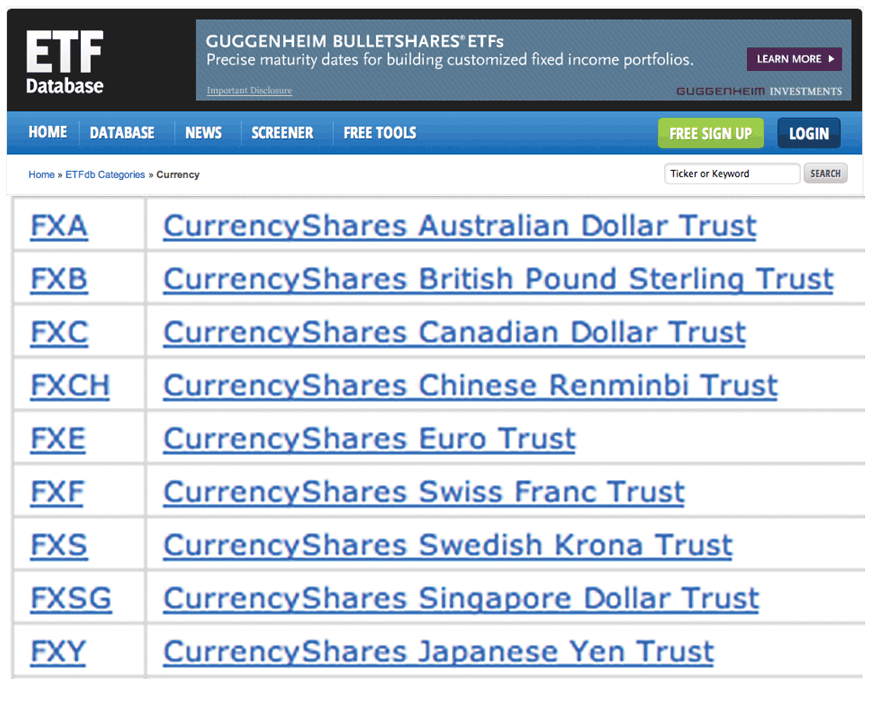 Explore Your Options
Explore Your OptionsQ&A
 Explore Your Options
Explore Your OptionsGot a question about options? Tom Gentile is the chief options strategist at Optionetics (www.optionetics.com), an education and publishing firm dedicated to teaching investors how to minimize their risk while maximizing profits using options. To submit a question, post it on the Stocks & Commodities website Message-Boards. Answers will be posted there, and selected questions will appear in future issues of S&C.
CURRENCY OPTIONS
As I travel the world speaking at various conferences, at some point the discussion usually turns to the world markets. When I broach the currency markets, the top two questions usually are: How can a trader profit from changes in currency values, and second, are there options in the currency markets? The answer to the first question can be best answered by the various articles on forex that may be found elsewhere in this issue or in other issues of this magazine, so I’ll concentrate on the types of options that are traded in the currency markets. The good news is there are indeed options that trade on currencies, but there are differences between these and options in other markets, so it’s good to understand them all before determining what is right for you. Here, I’ll discuss a few of them.
Currency options in your equity account: options on currency ETFs
You don’t have to be a futures or forex trader to hedge or speculate on currency prices. There are several ETFs in the equity markets that correlate directly with foreign currencies. The products listed in Figure 1 are known as CurrencyShares issued by Guggenheim Investments and are listed on the NYSE. These CurrencyShares are exchange traded funds (ETFs) that closely track the spot currency vs. the US dollar. They are similar to most standard ETFs in that you can buy and sell these in units, just like shares of a stock from your brokerage account. Buying shares means that you are expecting the foreign currency to rise against the US dollar. Conversely, shorting currency shares means you are expecting the US dollar to rise against the foreign currency in the pair.
Options on CurrencyShares are available. These are standard-vanilla option contracts, meaning that one contract controls 100 shares, just as with an equity option, and come with strikes and expiration dates that can be entered and exited any time until expiration. As of this writing, CurrencyShares have decent liquidity, especially for the position trader who looks to hold options overnight. For more information on CurrencyShares and options, visit www.etfdb.com or www.nyse.com.
Options on FX futures
FX options play an important role in hedging and speculating. In the last 10 years, the billions of dollars of FX futures and options have gone from roughly 10 billion to over 120 billion traded per day. FX options have grown sequentially with their counterpart, the FX markets themselves. But they also have the ease of use and flexibility, just like any regular options. They too have calls & puts, strikes, expiration dates, and in most cases, are American-exercised options, which means they can be exercised (or assigned) up to expiration.

FIGURE 1: GUGGENHEIM INVESTMENTS CURRENCYSHARES. ETF Database.
FX options are traded and cleared through the Chicago Mercantile Exchange. Each contract is specific to its own size; the Australian dollar FX contract, for example, has a $100,000 value, while the euro has a $125,000 value. Expiration dates and contract delivery vary. Some contracts offer weekly options, while others do not. Some contracts are cash settled, while others are physical delivery. For specific contract specifications, visit www.cmegroup.com/trading/fx/files/FXOptions_Specs.pdf.
FX binary options
Binary options differ because you set the amount at risk, the price, and expiration of the product, as well as whether or not it will touch or not touch the price by the expiration. Not coincidentally, these single payment option transactions, or SPOT, are called touch or no touch options. Based on where you set the touch or no touch price, your payout will vary. You either get paid or not get paid at expiration. Obviously, the probability of the binary touching or not touching will determine how much you get paid.
Think of a binary as an outcome, like the roll of the dice. Once you buy or sell a binary, you wait for the outcome. You cannot sell it to someone else, hence there is no time value. Either you win or lose, and you know your potential winnings or potential losses. Even though you bet up or down, it’s still a limited reward and limited risk outcome. You can go both ways, but realize that your return on risk will drop as a result. It’s best to completely understand your risks when trading binary options.
So which FX option is right for you? That answer is different for everyone. Some traders want the security and regulations of the NYSE or the CME and choose to trade through clearing firms. Others like the bank dealers, which offer competitive spreads, as well as commissions built in. Whatever the case is for you, there are plenty of ways to trade the global currency markets!